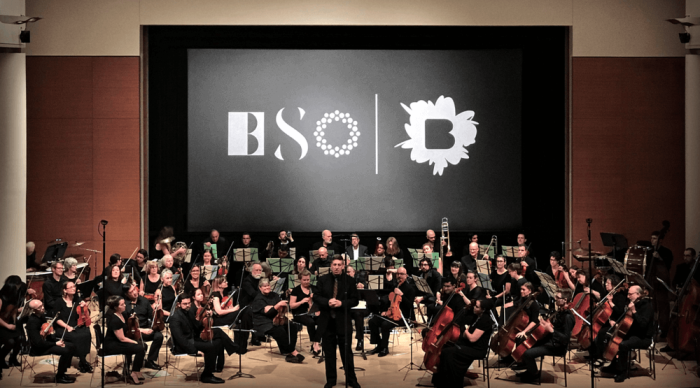Working with the Facebook generation
BY PERRY N. HALKITIS, Ph.D. & DONOVAN JONES, MA, MPH | The Centers for Disease Control and Prevention recently held a meeting where HIV prevention researchers, medical practitioners and frontline staff gathered to consider strategies for identifying young gay, bisexual and other men who have sex with men (YMSM) and are at risk for acquiring HIV. The impetus for this meeting was a rise in new HIV infections, detected among young men ages 13-29.
Recently, my colleagues and I provided some insights into the rise in infections among Black and Latino men — which appeared in the “Journal of Acquired Immune Deficiency Syndromes” (Volume 56, Issue 3). Data we collected in 2008 from 580 gay, bisexual and other YMSM, provide evidence that may explain this pattern.
First, we note that young White men report no fewer casual sexual partners than their Black and Latino peers, and all tend to report equivalent-age partners. However, Black and Latino men appear to begin their sexual lives at younger ages, and young Black men appear to engage in riskier acts with their casual partners. Because most of the young men in our study report sorting sexual partners by race and/or ethnicity, young Black and Latino men may be more at risk for acquiring HIV (since there is a higher concentration of the virus in these segments of the population).
Interestingly, epidemiological data also indicate a spike in HIV infections among White men in their 30s, a phenomenon potentially attributable to the increased concentration of virus in this segment of the population as White men enter their 30s.
Taken together, these realities suggest that we must understand the needs of YMSM, disentangle the structural and behavioral factors that place them at risk and develop prevention strategies that will speak to this new generation of young men. In fact, we must no longer rely on approaches that spoke to my generation in the 1980s — nor seek to access young men in the manner in which we were accessed thirty years ago.
At the Center for Health, Identity, Behavior, and Prevention Studies (CHIBPS), we conduct behavior research with young men. Identifying young gay, bisexual and other YMSM at risk has been the primary focus of our currently funded longitudinal study — P18. As we embarked on this study, we advertised and recruited using methods that had worked for us and other researchers in the past. However, it became clear early on that younger gay and bisexual men are difficult to engage using methods that have worked with similar populations in the past.
In 2010 a Pew Institute report showed that 94% of 18-29 year-olds had cell phones, 88% used text messages and 75% had a social networking profile on sites such as Facebook and Myspace. There has also been an influx in social networking sites which emphasize finding sexual partners. Additionally, young gay and bisexual men do not socialize exclusively in gay social spaces (such as bars and clubs). They also interact with their non-gay peers in social settings on college campuses and community agencies. Expanding recruitment to non-gay venues, and utilizing technology, are vital methods by which to engage this new generation.
In response to this shift, we employ a variety of strategies to engage potential research participants. Not surprisingly, the most successful method we have found involves posting paid ads on social marketing and dating websites. In addition, several other community-posting sites (such as Craigslist and Backpage) allow postings for free or a fee depending on which part of the site they run.
Every time contact is made with a gay or bisexual youth, they are given our web address, phone number and email — which are displayed on all of our recruitment materials and web ads. Some of our recruitment cards have a bar code that can be scanned by a smart phone, bringing them directly to our website. Once there, youth find information about our study, our Twitter feed, a YouTube video with information about the study and an online interest survey (as well as our phone number so they can call us or leave their information so we can call them).
Following this initial engagement, continued contact using multiple modes of e-communication is used to maintain interest. Initial appointments are scheduled over the phone, but appointment confirmations and study details are sent via email — and text message reminders are sent on the morning of their appointment. At their first appointment, when providing their contact information, many choose to provide their Facebook address or instant messenger username — allowing for even more means of electronic communication should they need a reminder or want to reschedule. E-technology is the heart of our recruitment and retention.
Our efforts parallel those of agencies such as Gay Men’s Health Crisis. The GMHC program Raw Cut, for example, educates and empowers young men through public service announcements, blogging and social networking. Unfortunately, it is not uncommon to hear older adults degrade the role of e-technology in the lives of young people, and to argue that social networks, texting and other electronic communications have led to social degeneration.
I liken this fear to the “dangers” of television espoused by many academics and political leaders decades ago. However, as we have learned, e-communication is the manner in which we can best find young people for our own studies. It speaks to the power of these technologies — which have implications not only for our own behavioral research, but also on how we seek to engage with and empower a new generation of men who face the reality of AIDS in their lives.
Perry N. Halkitis, Ph.D., is Professor of Applied Psychology and Public Health and Director of the Center for Health, Identity, Behavior & Prevention Studies (CHIBPS); Donovan Jones, MA, MPH, is a Director of Recruitment and Community Relations at CHIBPS and a doctoral student in Public Health at NYU.

















